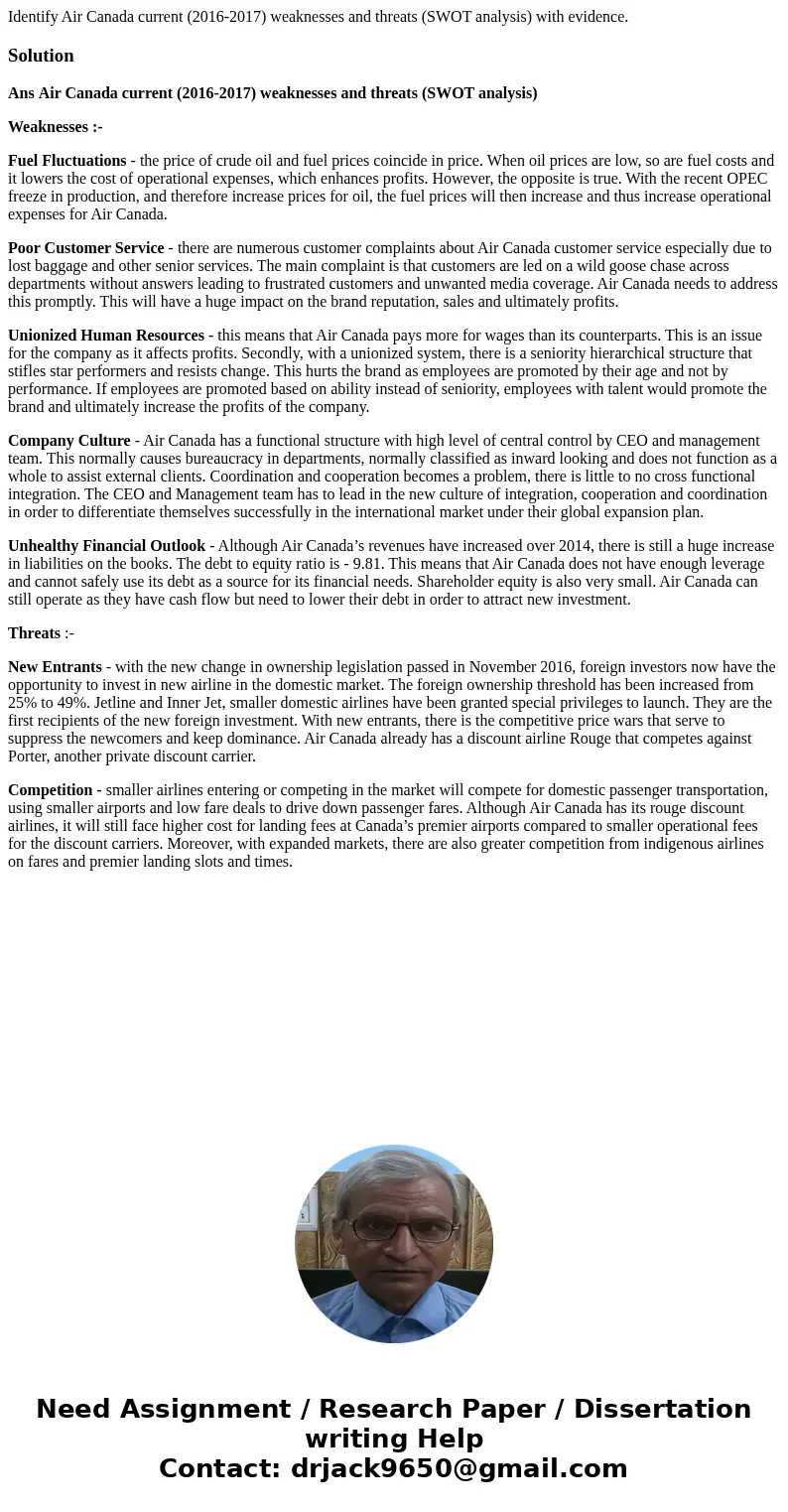Identify Air Canada current 20162017 weaknesses and threats
Identify Air Canada current (2016-2017) weaknesses and threats (SWOT analysis) with evidence.
Solution
Ans Air Canada current (2016-2017) weaknesses and threats (SWOT analysis)
Weaknesses :-
Fuel Fluctuations - the price of crude oil and fuel prices coincide in price. When oil prices are low, so are fuel costs and it lowers the cost of operational expenses, which enhances profits. However, the opposite is true. With the recent OPEC freeze in production, and therefore increase prices for oil, the fuel prices will then increase and thus increase operational expenses for Air Canada.
Poor Customer Service - there are numerous customer complaints about Air Canada customer service especially due to lost baggage and other senior services. The main complaint is that customers are led on a wild goose chase across departments without answers leading to frustrated customers and unwanted media coverage. Air Canada needs to address this promptly. This will have a huge impact on the brand reputation, sales and ultimately profits.
Unionized Human Resources - this means that Air Canada pays more for wages than its counterparts. This is an issue for the company as it affects profits. Secondly, with a unionized system, there is a seniority hierarchical structure that stifles star performers and resists change. This hurts the brand as employees are promoted by their age and not by performance. If employees are promoted based on ability instead of seniority, employees with talent would promote the brand and ultimately increase the profits of the company.
Company Culture - Air Canada has a functional structure with high level of central control by CEO and management team. This normally causes bureaucracy in departments, normally classified as inward looking and does not function as a whole to assist external clients. Coordination and cooperation becomes a problem, there is little to no cross functional integration. The CEO and Management team has to lead in the new culture of integration, cooperation and coordination in order to differentiate themselves successfully in the international market under their global expansion plan.
Unhealthy Financial Outlook - Although Air Canada’s revenues have increased over 2014, there is still a huge increase in liabilities on the books. The debt to equity ratio is - 9.81. This means that Air Canada does not have enough leverage and cannot safely use its debt as a source for its financial needs. Shareholder equity is also very small. Air Canada can still operate as they have cash flow but need to lower their debt in order to attract new investment.
Threats :-
New Entrants - with the new change in ownership legislation passed in November 2016, foreign investors now have the opportunity to invest in new airline in the domestic market. The foreign ownership threshold has been increased from 25% to 49%. Jetline and Inner Jet, smaller domestic airlines have been granted special privileges to launch. They are the first recipients of the new foreign investment. With new entrants, there is the competitive price wars that serve to suppress the newcomers and keep dominance. Air Canada already has a discount airline Rouge that competes against Porter, another private discount carrier.
Competition - smaller airlines entering or competing in the market will compete for domestic passenger transportation, using smaller airports and low fare deals to drive down passenger fares. Although Air Canada has its rouge discount airlines, it will still face higher cost for landing fees at Canada’s premier airports compared to smaller operational fees for the discount carriers. Moreover, with expanded markets, there are also greater competition from indigenous airlines on fares and premier landing slots and times.

 Homework Sourse
Homework Sourse